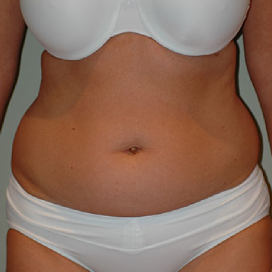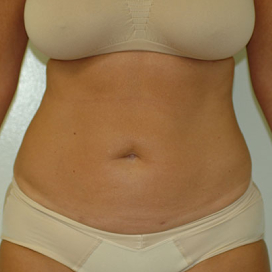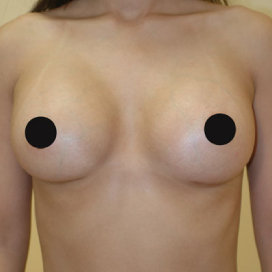
find out everything you need to know about your better minor procedure scar options
Scarring is a natural part of the body’s healing process, occurring after injury or damage to the skin. That said, understanding the different types of scar tissue and how to effectively address them is essential to achieving optimal healing outcomes.
As the healing process continues, the scar tissue may become raised, lumpy, and red, reflecting ongoing collagen production and increased blood supply to the injured area.
To effectively manage scarring, it is crucial to work with a qualified medical professional such as Dr. Gartner who can assess your individual needs and recommend the most appropriate treatment options. With the right care and attention, scars can be minimized after your treatment.
After an injury, the body releases collagen, a building protein that helps repair and strengthen the wound. Collagen is deposited at the site of tissue damage to facilitate healing and reattach the damaged skin. Over time, this collagen builds up and forms a protective layer over the wound, resulting in scar tissue.
Procedure
Plastic surgeons take into account the position of lesion removal on the body and that body area’s tendency to scar visibly. Also, your skin type and tendency to form raised or keloid scars is a factor when planning excision or laser skin treatments.
Unlike dermatologists, plastic surgeons can tailor treatments to specific patient needs by being able to perform a combination of procedures at the same time to reduce downtime and recovery overlap, handling more complicated skin problems under extreme conditions, and offering more extensive anatomical and skin care knowledge. Plastic surgeons are known to use their extensive training in aesthetics and holistic care to help fully restore skin’s condition to health.
Whether meticulous laser, injection, or excision techniques are used, Dr. Gartner takes the utmost care to minimize tissue damage during and after the procedure. Skin edges are closed to offload tension that leads to scarring. No tell-take “railroad track” stitches are typically necessary to close and care for your incision.
The Gartner Plastic Surgery and Laser Center offers a carefully curated selection of aesthetic treatments to suit every need. we invite you to book a consultation and find out which of our facial peel options are best suited to your needs.
Overview
At Gartner Plastic Surgery, we take a careful approach to ensure that our patients’ scars following minor procedures are better than average. We understand that even minor procedures can leave noticeable scars, which is why we strive to minimize scarring through skillful techniques and proper wound care.
We understand that everyone’s body heals differently, and some patients may be more prone to developing visible or raised scars. However, by taking a careful and attentive approach, we aim to achieve the best possible outcome for every patient and minimize the appearance of scarring as much as possible. Our goal is to ensure that our patients are satisfied with their medical care and feel confident and comfortable in their skin.
Expectations
NORMAL FINE-LINE SCARS
Usually following an injury or surgery; a minor wound cut that usually leaves a red raised line. It will gradually fade in color and flatten over time. If surgical incisions have a lot of external tension due to swelling and tension of stitches, this can increase the appearance of scarring. For darker skin types, scar tissue may leave a brown or white line.
KELOID OR HYPERTROPHIC SCARS
When scars grow dense and fibrous outside the natural borders of the original wound (from collagen overgrowth); they are called ‘keloid scars’. They are ‘hypertrophic’ scars are raised, but do not expand beyond their natural borders. These scars may take on a more red or purple color, and may appear rubbery or shiny. Keloid scars are more frequent in Oriental and Afro-Caribbean races, while hypertrophic scars are more common in children
PITTED OR SUNKEN SCARS
Usually, as a result of inflammation, there is damage to underlying fat and collagen cells resulting in inadequate tissue to fill out the skin. For example, ‘pockmarks’ left from Chickenpox.
CONTRACTURE SCARS
Often caused by burns. Very tight skin affects movement and flexibility. If contracture scars run deep into the skin, it may result in disruption of the normal function of nerves or muscles. Surgery usually involves the removal of the scar tissue entirely
STRETCH MARKS
Scars occur from skin tears. Initially, stretch marks appear red or purple in color, but over time lighten or silver.
The Difference
If you’re concerned about the scar left behind after a small lesion, lump, or bump removal, you may be wondering how dermatologist scars differ from those of plastic surgeons. While minor procedures are commonly performed by dermatologists in New Jersey and NYC, it’s important to note that only a plastic surgeon’s precision and training can ensure minimal scarring when removing skin lesions.
Many patients may feel self-conscious about lumps and bumps on their skin and seek help from a dermatologist to remove them. However, scars can be physically and psychologically disfiguring, which is why it’s essential to choose a qualified professional to perform the procedure.
Depending on the type and depth of the injury, more complex cases may require more invasive procedures to reduce or completely remove scars. When laser treatments, injectables, or fillers are not enough, a plastic surgeon may become the more suitable choice for extensive care.

Plastic surgeons undergo rigorous training and have specialized expertise in minimizing scarring during procedures. They use skillful techniques to make smaller incisions and sutures that are less visible, as well as careful wound care instructions to ensure optimal healing.
In summary, while dermatologists may perform minor procedures to remove small lesions, lumps, or bumps, only a plastic surgeon can provide the precision and training necessary to ensure minimal scarring. If you’re concerned about scarring after a skin lesion removal, it’s essential to choose a qualified professional with expertise in minimizing scarring such as Dr. Gartner.
Much like dermatologists, board-certified plastic surgeons, and reconstructive surgeons also understand skincare and have a vast knowledge of tissue interactions (especially in the face), and advanced wound revision techniques.
Plastic surgeons’ distinguished knowledge and skill set make them a good choice for skin treatments or even revision/reconstruction, as they can provide both appropriate non-invasive and/or invasive techniques.
The simplest mole removal on a person’s face may leave a lasting mark or depression that is not necessary in skilled hands.
Treatment Options
Dermabrasion And Laser Resurfacing: Making scars smoother, less visible, or prominent by removing the upper layers of the skin surface using a laser or abrading tool.
- Injections Or Fillers: Used to shrink keloid or hypertrophic scars.
- Surgical Removal And Fine Stitching: May be necessary to make keloid or hypertrophic scars less visible.
- Scar Revision: Reduces irritation and pain caused by keloids, and improves skin tone and texture.
- Fillers: Used to add plumpness to the skin to match neighboring areas.
- Scar Reshaping: Reshapes scars to become less noticeable.
- Scar Revisions: Used to help restore flexibility and mobility in scarred areas affecting the skin and muscles.
Scar tissue is composed of the same collagen protein in normal tissue, but with a different composition, which attributes to its healing characteristics. For example, scars on the skin are less resistant to UV rays, and sweat glands. Also, hair follicles do not grow back within scar tissues. Where in normal tissue, the collagen fibers are built in a weave-like formation; scar tissue is built in a single-direction alignment.





